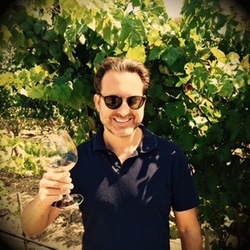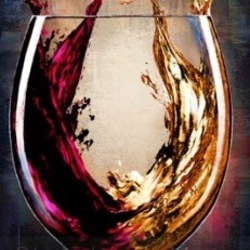Meringue
Thomas Fogarty
Estate Grown Santa Cruz Mountains Chardonnay 2015
A blend of all estate vineyards.
Most malo of all tasted.
Vanilla, lemon meringue, clove and a wee allspice on the closing notes.
Represents a very well crafted, expertly crafted wine but it has a bit of a generic character of 'Cool climate California Chardonnay'.
The ticket price of $95 retail is an expensive admission for this show. — 2 years ago
Rochioli
Russian River Valley Chardonnay 2016
Wine is showing extremely well but could still use sometime to age. Lemon, lime, orange marmalade, green apple, pear, some confection, medium acidity, what I would describe as a beautiful acidic, citrusy with touches of dairy key/lemon meringue pie. — 4 years ago

De Chanceny
Brut Excellence Tête de Cuvée Vouvray Chenin Blanc
Nose: lemon, mousse, sweet orange, candied cherry, a tiny hint of floral vanilla. Smells very inviting!
Taste: mousse, vanilla, lemon meringue (?), mild nuttiness, smooth and silky texture. Distinct cherry on the finish. Marvelous. Great value, better than most champagne I’ve tried. 92. — 3 years ago
Menti Giovanni
Riva Arsiglia Gambellara Classico Garganega 2017
outstanding. salinity , lemon meringue, deep thyme/sage coming from a bit of extended maceration. — 6 years ago
Paul Bara
Grand Millésime Brut Grand Cru Champagne Blend 2018
Tasted from 1/2 bottle. They come in handy for dinner for two in many cases, but especially at a restaurant that allows corkage. Most do in California. It is even harder to find vintage champagne in 375ml’s.
The 2018 vintage was good to very good. You need to taste and or read up for its best offerings.
A note, I tasted at the Billecart-Salmon property in later October 2022 with Mathieu Roland-Billecart. As insightful as that was, he was asked other than Billecart Salmon champagnes, what was one of his favorite champagnes? His reply was surprisingly an older vintage Paul Bara he had recently. That’s a producer question that gets asked often. Normally generates a pause with some minor angst to answer.
The nose shows; lemon chiffon/meringue, bruised apple to slightly cider, bruised pear, yellow & white stone fruits, just ripe pineapple, orange citrus blend, lime pulp, tropical melons, whipped, white cream, white spice-ginger, yeasty bread dough, saline, crushed limestone pulp, crumbled chalk, sea fossils, white spring flowers set in yellow lilies.
The palate is round & soft. The mousse is delicate w/ micro oxidation. Ripe; lemon chiffon/meringue, white & yellow stone fruit, slightly bruised apple & Bosc pear, lime pulp, orange citrus rind, some tropical melons, cream, ginger white spice, yeasty bread dough, sea spray, saline, sea fossils, dry crumbled chalkiness, caramel notes, heather honey, warm perfectly toasted toast, graham cracker, nougat w/ nuts, yellow flowers set in a field of white spring flowers, excellent acidity with a nicely; balanced, structured, tensioned, polished finish that lasts a minute and falls on limestone laced with soft, dry, powdery chalkiness.
Photos of; the house of Paul Bara, chalky caves w/ riddling racks, old wood basket press & a vineyard picking party. — 8 months ago
Cheval Quancard
Cuvée Clémence Entre-Deux-Mers Sémillon-Sauvignon Blanc Blend
2018 vintage. Good example of oaked Sauv Blanc blend (even says "elevé en fûts de chêne" on the label). 70-20-10 SB, Sémillon, Muscadelle. Lemon meringue, dill, a little coconut, banana peel, sunflower seed, dandelion. Oak is definitely overt, but well-integrated. — 6 years ago










Bruce Dunbar
Pear, chalk and floral nose. Apple, honeysuckle, slate and lemon meringue palate. The 23 Sonoma Coast Chard from Rivers-Marie is really crisp, light on its feet and lets the fruit shine through. — 5 months ago